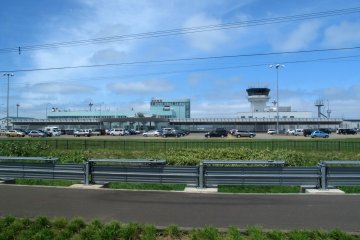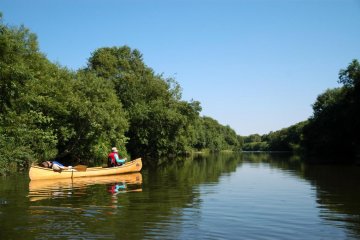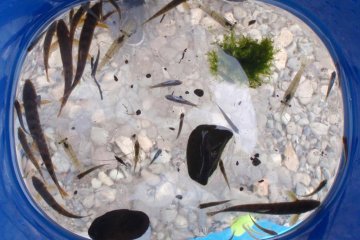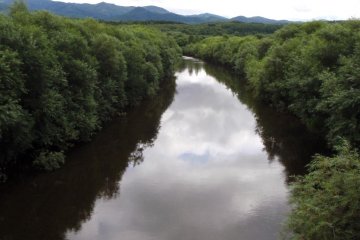Surrounded by an impenetrable mass of trees and brush, save for a bridge here and there, the Tombetsu river winds its way through the mountains and fields of Nakatombetsu township almost undetected. With access only possible at a handful of locations, for most, the twists and turns of this river are completely unknown, left to remain as secrets, dark mysteries flowing ever along beyond the boundaries of our everyday consciousness.
Yet via a canoe and a gentle touch, the river, who at once had seemed so aloof, transforms into a welcoming friend. And with each caress of your oar into the lucid, tranquil current, you are drawn ever deeper into a wondrous natural sanctuary. Schools of minnows dance beneath you. An eagle searching for trout swoops up onto a nearby perch. A family of ducks frolics near the shore. And a king fisher steaks past, a blue, nearly indistinguishable blur.
After a while, you forget you are in a place governed by reality, for the same barriers that prevented you from detecting the river from the outside, now obscure your perception of the outside world from within. And although the banks roll by every so slowly, as your finger tips dangle carelessly in the cool water, time, it seems, stands still.
But then, through a gap in the foliage, the sparkling green terraces of Heidi Hill leap into the sky, and suddenly you are overcome with the unmistakable realization that the Tombetsu is not just a river, it is the soul of Nakatombetsu, and you have just inadvertently become a part of it.
To anyone coming to northern Hokkaido, it is highly recommended that they consider taking a trip down the Tombetsu River. Guided canoe rides are a regular service provided by the Soya Nature School (Shizen Gakkou), located in Nakatombetsu township, in the village of Pinneshiri, just southwest of the road station. While you can arrange excursions there directly, it is best to make reservations in advance. Prices are 3,000 yen per adult for three hours or less, or 5,000 yen for anything between three to six hours in length. Transportation and life jackets are provided.
However, for those with basic rafting experience and their own floatation device, the shallow, mild current of the Tombetsu is easy to navigate without a guide. The most common launch site is indicated on the map to the right. To get there, head north from Nakatombetsu town center on highway 275. Just as you reach the edge of town, you'll pass a construction company on your right with a mass of heavy machinery parked out front. Just past this is Izumi Bridge which crosses over a small stream heading to the Tombetsu river.
Turn left down an access road on the southwest side of the bridge. Follow the road as it goes up and over a dike, and then north along the riverbank until you see an area clear of brush. After parking your car off to the side of the road, unload your gear and scramble down a small berm to reach the river.
From here, take a lap around the large body of still water upriver, or head directly down the quick water to the lower part of the river. Be on the lookout for trout, freshwater crabs, clams, otters, snakes, birds and other wildlife. Keep going down river until you reach a bridge. This is Kotobuki Bridge and is adjacent Kotobuki park where there is parking, restrooms and other facilities.
Disembark on the southern bank, immediately down river from the bridge. If the weather is warm, this is a great spot to do some swimming. There are even some nice boulders to jump off on the opposite bank. After you've finished, follow the access road from here that leads directly out to highway 275 where you can make the short 2.5km hike back to your car and the start of your next adventure.











